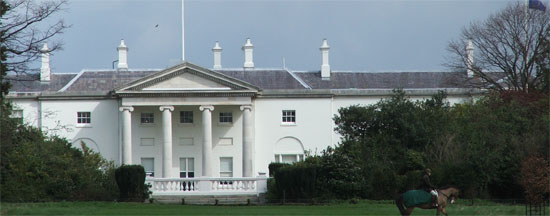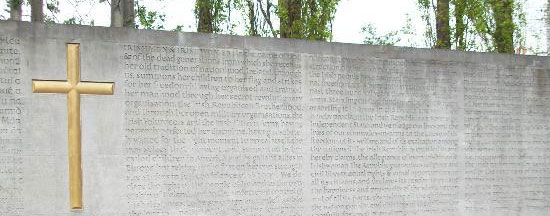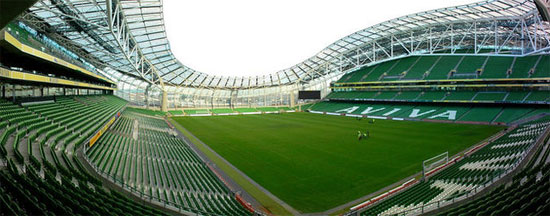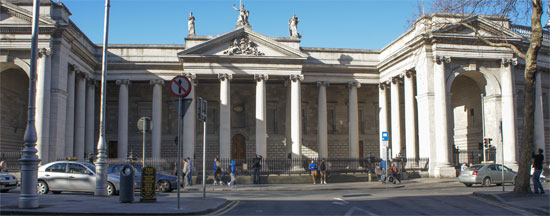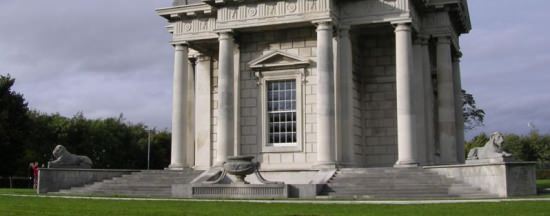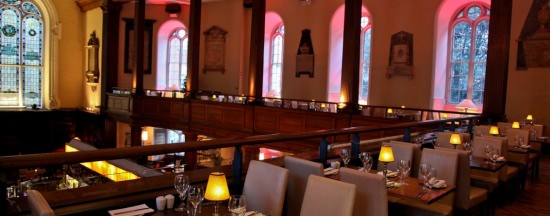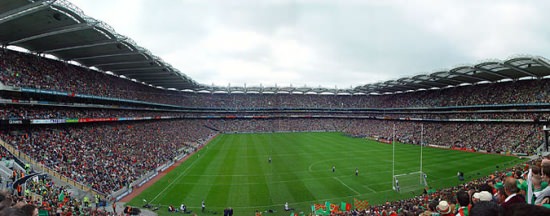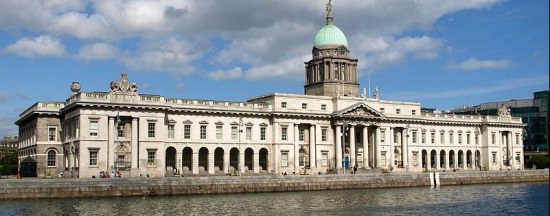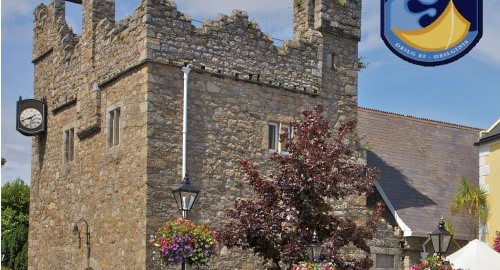Bull Island, or more properly North Bull Island, is an island located in Dublin Bay, about 5 km long and 800 m wide, lying roughly parallel to the shore off Clontarf, Raheny, Kilbarrack, and facing Sutton. The island, with a sandy beach known as Dollymount Strand running its entire length, is a relatively recent result of human intervention in the bay.
In times past, Dublin Bay had a long-running problem with silting, notably at the mouth of the River Liffey. After years of primitive dredging, an attempt to maintain a clear channel more effectively got under way when in 1715 construction of the Great South Wall began. In 1761, work on a stone pier commenced, working from the Poolbeg Lighthouse back to shore.
It was during this period that the building of a North Bull Wall was also proposed. When it was seen that the South Wall did not solve the silting problem, the authorities responsible for Dublin Port commissioned studies on the matter. Captain William Bligh, of “Bounty” fame, surveyed Dublin Bay for the Ballast Board in 1801, highlighting the potential of the North Bull sandbank.
A wooden bridge, the first Bull Bridge, was erected in 1819 to facilitate the construction of a stone wall. Started in 1820, the Bull Wall was completed in 1825.
Over the succeeding 48 years, the natural tidal effects created by the walls deepened the entry to the Liffey from 1.8 m to 4.8 m. Much of the silt now scoured from the river course was deposited on the North Bull, and a true island began to emerge, with people venturing out to the growing beach. The volume of visitors was increased when horse tram services to Clontarf began in 1873, and when a full tram line to Howth opened 1900, with stops in the Clontarf / Dollymount area.
In 1889, the Royal Dublin Golf Club, then located at Sutton, received permission to lay out a golf course at the city end of the island, and construct a clubhouse.
The island is connected to the mainland by the Bull Bridge, today a one-lane wooden road bridge (with weight and height restrictions) at the southern (Clontarf/ Dollymount) end, and by a broad causeway at Raheny.
Most of North Bull Island is the property of Dublin City Council, the exception being North Bull Wall, the breakwater beyond it, and the wooden bridge to it, which are owned by the Dublin Port Company (and closed for a day each year to ensure that no right of way is created), and the Royal Dublin Golf Club links. The bulk of the island makes up the largest park owned by the city.
North Bull Island has the most designations of any site in the Republic of Ireland and its importance for nature conservation has been recognised since 1914. It was the first National Bird Sanctuary (1931). Since 1981 it has been designated a biosphere reserve by UNESCO, the only biosphere reserve in the world located entirely in a capital city.
In 1988, it became a National Nature Reserve. It is of European Union importance, being a Special Protection Area under the EU Birds Directive and a Special Area of Conservation under the EU Habitats Directive. It is also a National Special Amenity Area since 1995, one of 3 in the Republic of Ireland. This recognises both its outstanding beauty and nature conservation values.
Bird species on the island include pale-bellied brent geese, Eurasian curlews, Eurasian oystercatchers, grey plovers, northern shovellers, little egrets, reed buntings and little terns. There are six terrestrial mammal species on the island: brown rats, red foxes, field mice, Irish hares, hedgehogs and European rabbits. Common seals and grey seals are also found in the surrounding waters and can regularly be seen on the sand at low tide at the tip of the island near Howth.
The Island is a breeding site. It is also home to many species of plants including the bee orchid, pyramidal orchid, Marsh Helleborine, Bee orchid and common spotted orchids. There is an Interpretative Centre at the end of the causeway on the right hand side which has displays and information on the flora and fauna of the island.
Dollymount Strand, the 5 km beach on the island, is a popular walking and recreational area. Many people learned to drive on the firm flat sandy foreshore at low tide. Parking areas allow access for those who wish to sit in their cars and look out to sea watching the ships and ferries. The island has two golf courses, the more famous belonging to the Royal Dublin Golf Club, and the newer to St. Anne’s Golf Club.
This information has been adapted from the excellent Wikipedia article cited below.
wikipedia.org/wiki/Bull_Island
